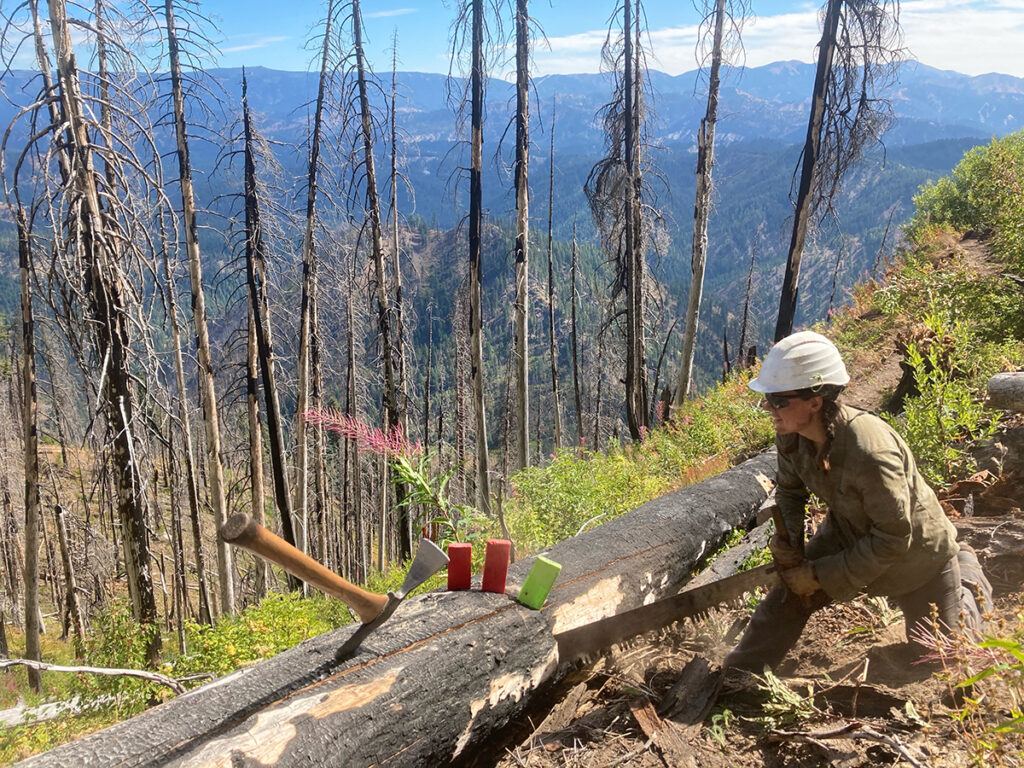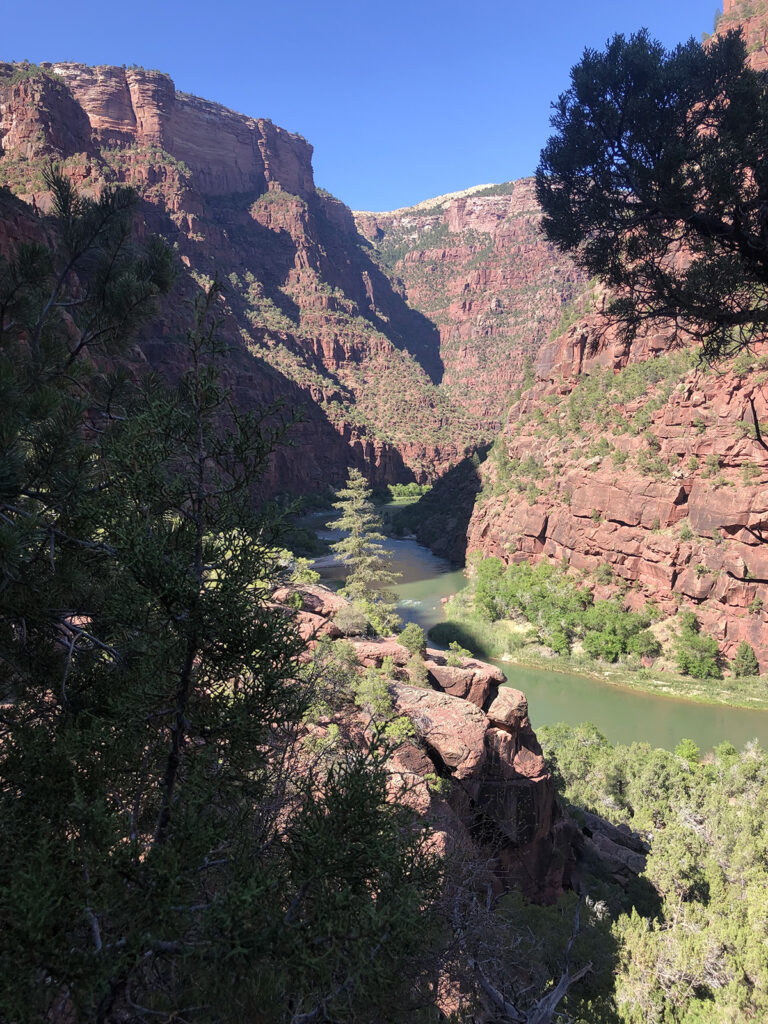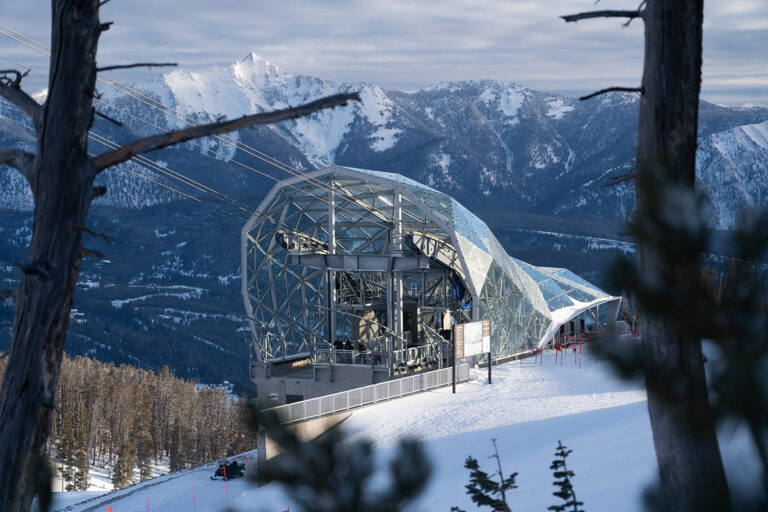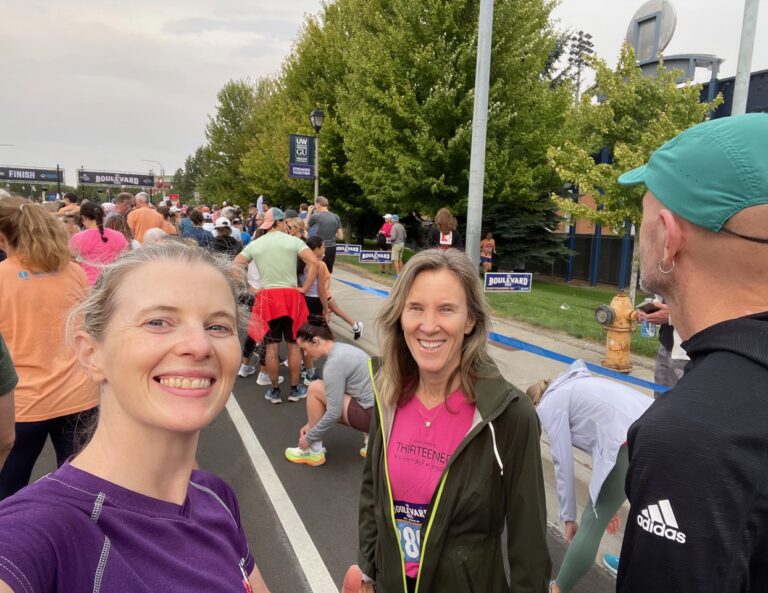By Claire Thompson
Cover photo courtesy of Claire Thompson
I spent most of the summer of 2022 clearing trails in burned forests. The Entiat River drainage in north central Washington, where I was working for the Forest Service, had been torched by a series of fires over the past two decades: 2006’s Tin Pan, 2014’s Duncan, 2015’s Wolverine, 2018’s Cougar. The previous summer, trail crews had cleared hundreds of logs from the Entiat’s main routes. This year, hundreds more singed snags had fallen to replace them.
I trudged through the tawny dust day after day, crosscut saw over my shoulder, watching the waterfalls that feed the Entiat River dwindle to trickles as the summer wore on. Hiking through the most shadeless stretches of trail, I tried to pass the time by looking in vain for seedlings, anything green to break the brown. The temperature in Wenatchee topped 100 again and again. At night, I continued to cut logs in my dreams.
The first week of September, I took a break from work to join a waterborne writing workshop. For six days, a group of us would float the Green River—which threads the border between Utah and Colorado—talking and writing about climate change. After several scorching months spent confronting the aftermath of wildfire and drought on a daily basis, the trip’s themes couldn’t have felt more apt.
So what surprised me the most, driving east into the desert at the beginning of September, was the green. Here in the Northwest, late summer is the least lush, most flammable time of year. On my way to Utah, I’d crossed the corner of Oregon in a murk of gravy-colored smoke. I expected the bluffs and breaks of Dinosaur National Monument, my destination, to feel at least as parched as home. Instead, the landscape was a vivid rainbow: the creamy sunset-colored curves of the cliffs, dark-green bursts of piñon and juniper dotting the rocks, white froth of rapids on the jade river, all of it beneath a dome of bright blue sky.
At night, on the sandy beaches of the Green River, we had campfires, which shocked me. Then I remembered that in the Southwest, fire season traditionally peaks in late spring. The monsoon rains come in June and July, greening the willows, and by September it’s perfect camping weather. I looked around and above me, trying to imagine flames climbing these cliffs, overtopping the lip of the canyon, running away across the plateau. I can’t look at a landscape without seeing fire.

Far from the burns of the high Cascades, the desert’s vibrant colors quenched my thirst. That week on the Green River was sweet relief in more ways than one. I felt free, on the river, to fully occupy a different part of myself—the writer part, the version of me that belonged in a world where paying attention and telling about it, as Mary Oliver instructed, not only mattered, but was perhaps the most important thing I could do.
After the river, I drove home via Missoula, where I had a closet full of belongings to clear out of my grad-school apartment before my subletter took over the lease. In the middle of shoving lamps and end tables and boxes of old notebooks into the back of my Subaru, I got a call from my boyfriend, back in Washington, at his home just west of Stevens Pass. A fire had started early that morning near Skykomish, ten miles away. An east wind was pushing the blaze down valley, fast. Flakes of ash and chunks of embers fell around him as we spoke. He was clearing debris, setting up sprinklers, and loading important possessions into a trailer, poised to evacuate. Was there anything of mine he should make sure to grab?
All at once, the sparkling days on the Green River with my new writer friends receded into a dreamy past. Like everyone who lives in a fire-prone landscape, I carry a constant awareness that my place could be next. I never imagined it would be a west-side fire that would first hit home.
The Bolt Creek Fire, as the blaze threatening my home was christened, was an eerie echo of the 2020 Labor Day fires in Washington and Oregon. Same week of the year, same wicked wind driving the fire swiftly down the west slope of the Cascades, toward crowded suburbs and interstates. Same heavy pall lingering too long over Seattle, reminding city dwellers that the border between wild and worldly has always been a flimsy fiction. As climate-caused drought sucks moisture from temperature forests, west-side conflagrations like the Bolt Creek Fire threaten to become more common.

That week on the Green River, in the rainbow desert, our conversations kept swirling back to the same questions. We talked about how to embrace a world that’s changing. We spoke of the search for a new way to write about landscape, one that is realistic without being pessimistic, that makes room for grief and hope at the same time, that is grounded in love.
“Funny thing about grief,” Ada Limón wrote, “its hold / is so bright and determined like a flame, / like something almost worth living for.” Hearing her read those words on the radio months later, from the safety of a snowy winter, I remembered that surreal week in September when I left a river and went home to a fire.
I remembered the quiet moments from that summer too: a silent, sunny morning sliding down a river that narrowly escaped being drowned by a dam. A sun-baked afternoon searching for seedlings in a burn and finding wolf tracks in the dust instead. I saw them now as the moments when paying attention might turn into a devotion worth living for.
Claire Thompson is a seasonal trail worker for the U.S. Forest Service and an adjunct English teacher at Wenatchee Valley College. She is pursuing an MFA in Nature Writing from Western Colorado University.













